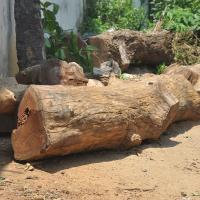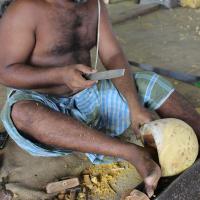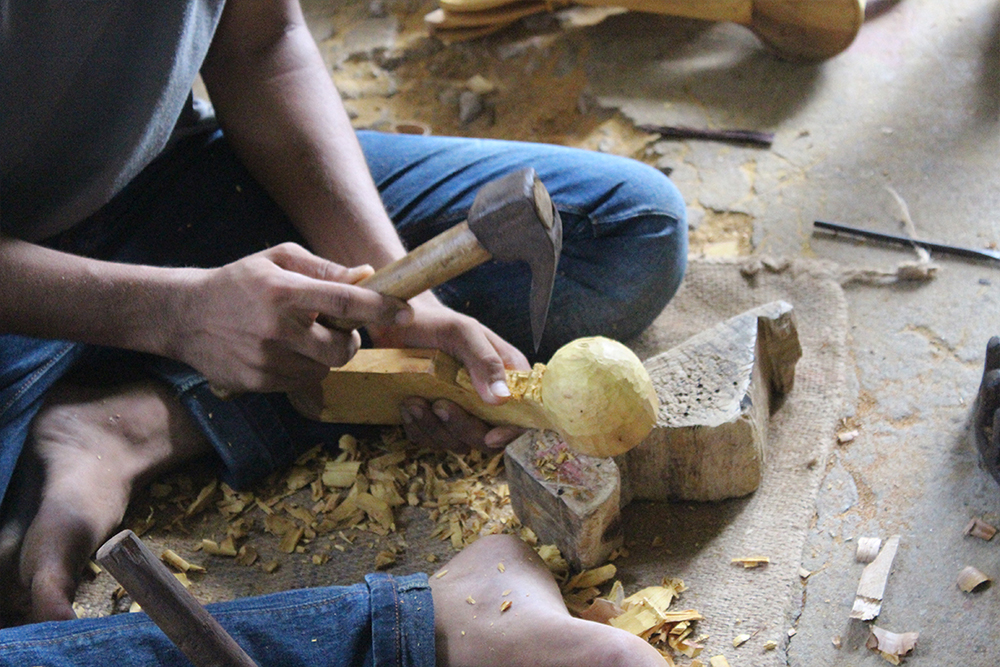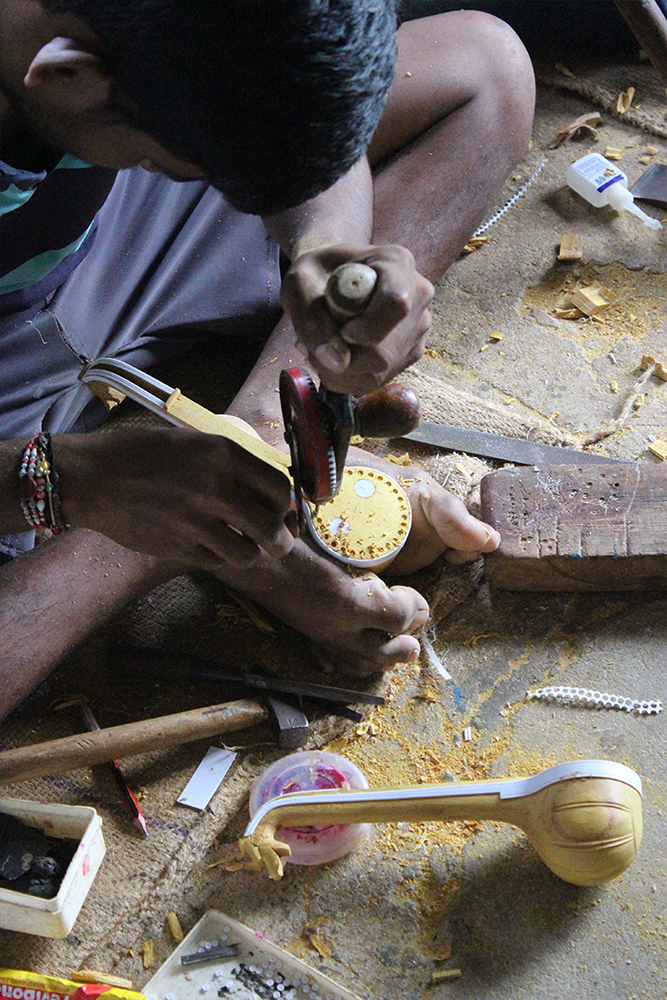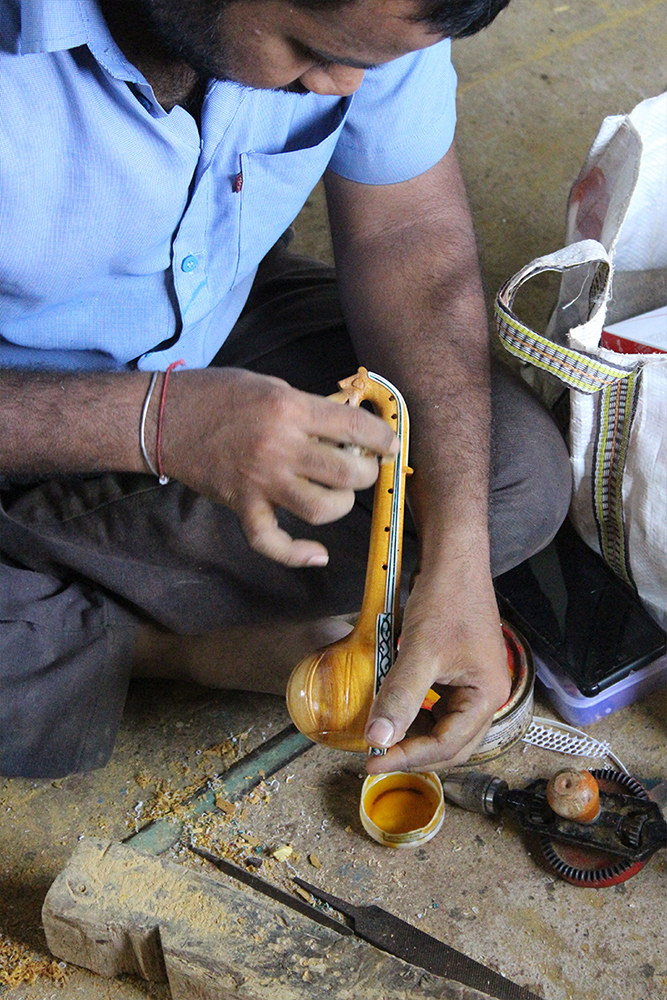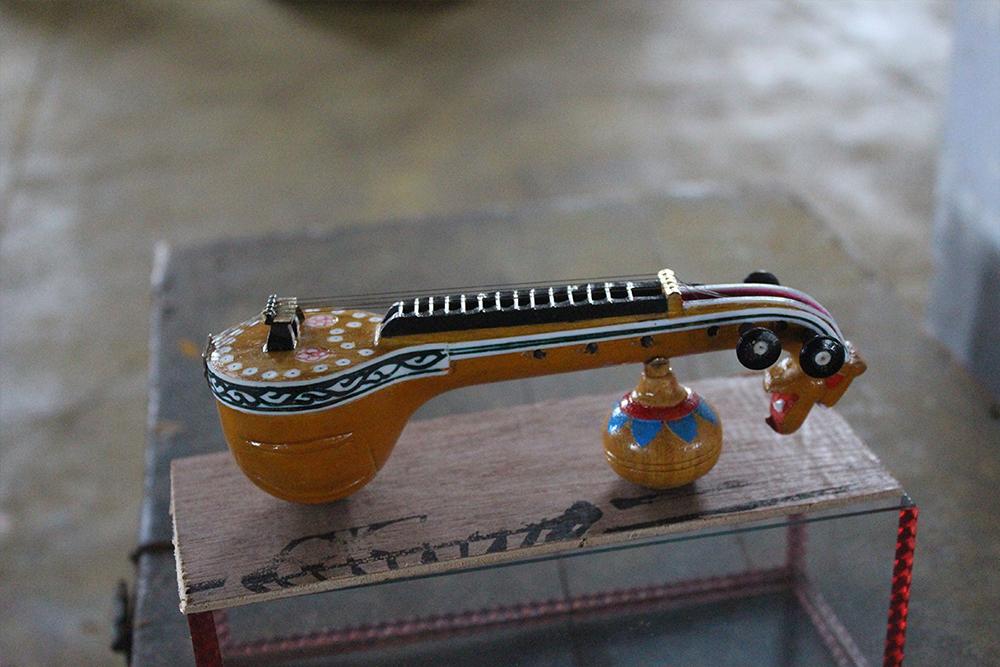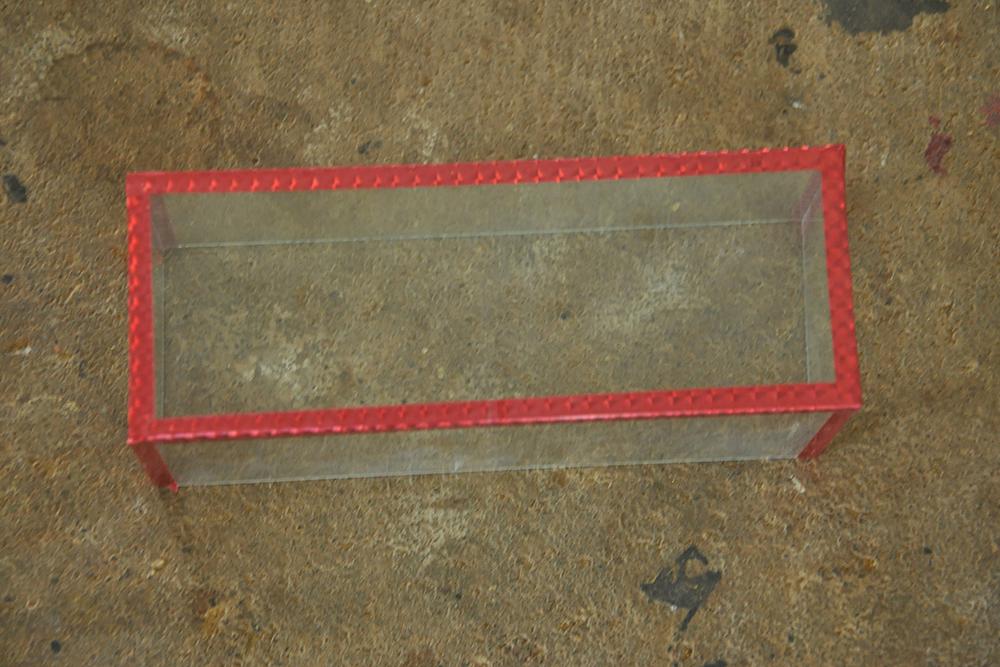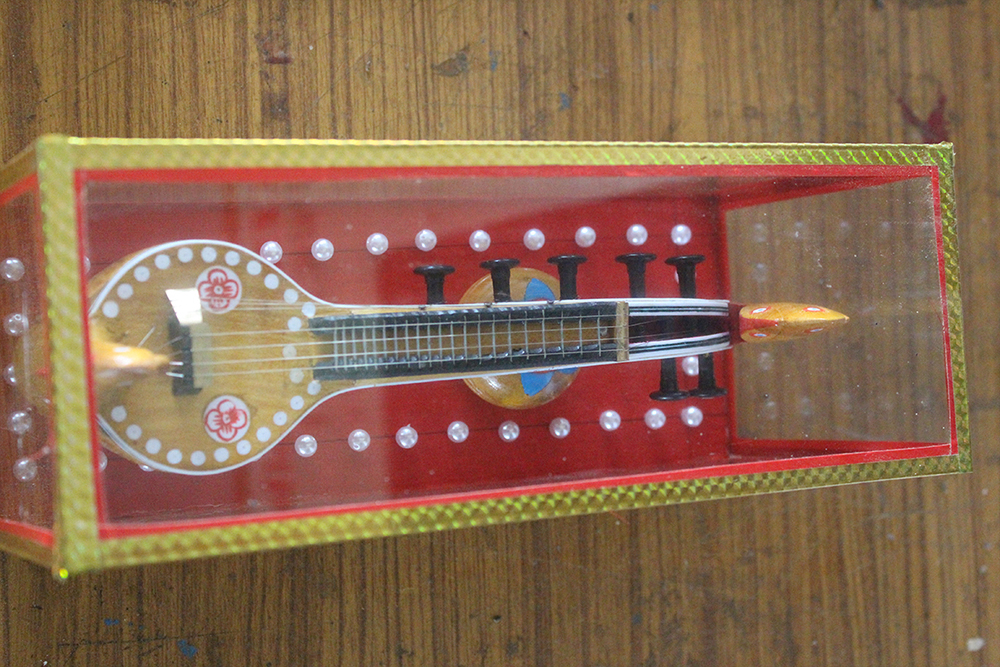Design Gallery
Miniature Veena Making
Bobbili, Andhra Pradesh
by
In Indian traditional music, Veena has an important place. The art of playing this string instrument varies from region to region. The style of playing the Veena is called Banis; the four distinct styles known are Thanjavur, Mysore, Travancore, and Vizianagaram. Bani is nothing but a style cultivated carefully over some time by a set of people or one person. This style or Bani is then passed over to the next generation of disciples. Depending on the Bani, the making of a Veena also varies to some extent. Andhra Pradesh also has a tradition of Veena making in a place called Bobbili in the present Vizianagaram district from where the instrument derived its name Bobbili Veena. In Bobbili village, a couple of families is into Veena making; the Veenas’ they make are procured by the Craft Development Centre and sold to the outsiders.
Bobbili Veena is invented and developed in Bobbili in the 17th century during the reign of Pedda Rayudu. Apart from regular Veena, smaller sizes of Veenas are also made. The miniature Veena is used as a souvenir or as a showpiece. These do not have any functional aspect, and they cannot be played. The making procedure of the miniature Veena is similar to the actual one. It takes around 1-4 days to make a miniature Veena. The finished Veenas are placed in a glass enclosure with a wooden base.
For more details:
http://www.dsource.in/resource/veena-making-bobbili-andhra-pradesh
